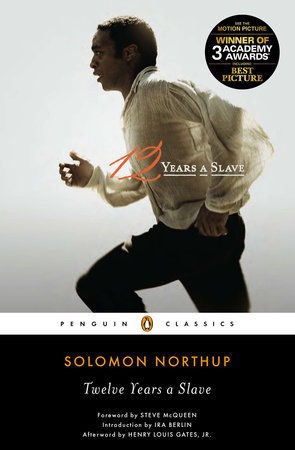12 Years a Slave (Movie Tie-In) Reader’s Guide
By Solomon Northup


INTRODUCTION
For a free black man who lived in a society in which most black people were politically proscribed, economically impoverished, and socially ostracized, Solomon Northup lived a good life. He, his wife, and children enjoyed a modest prosperity in the upstate New York community of Saratoga Springs where his reputation as a clever jack-of-all-trades and an accomplished fiddler gained him the respect of white and black.
But free status and admirable reputation meant little in a slave society, where the worth of black flesh was measured by labor transformed into dollars. While slavery may have been abolished in the North, kidnappers and their confederates-driven by the swelling demand for men and women to grow cotton, sugar, and other valuable commodities-roamed the land. The lack of respect for black humanity put all black people, no matter what their standing, at risk.
In the spring of 1841, Northup’s wife left Saratoga for short-term employment in a nearby town.
In her absence, Northup-eager to earn a few extra dollars, display his talents, and perhaps see a bit of the world-eagerly accepted an invitation to join a traveling circus. His travels went well until Northup reached the nation’s capital where his companions drugged and sold him to a local slave trader. Beaten mercilessly when he asserted his claim to freedom, Northup was shipped to Louisiana where he labored as a slave for more than a decade.
In Twelve Years a Slave, Solomon Northup tells the story of his captivity. His account is distinguished from the some 150 slave-authored narratives published before the Civil War, as Northup had been born free. It is a brutal story, which provides an unvarnished view of the inhumanity inherent in the system of chattel bondage. More than any contemporary account of slavery, Northup’s provides a full sense of how slavery compounded the most sordid human instincts and twisted even well-meaning acts beyond recognition. But Northup was determined neither to exaggerate slaveholder’s inequity nor the slave’s virtue. Slave masters were both good and bad; slaves strong and weak. Rather than rehearse the well-known stereotypes, Northup exposed complex ways in which men and women, master and slave reacted to the unspeakable evil of enslavement. It was not a pretty picture.
But if slavery was a hellish nightmare, living death in the words of one scholar, it was also life. Twelve Years a Slave explains how some men and women refused to be dehumanized by dehumanizing circumstances, creating meaningful relationships and maintaining estimable values in the most difficult of circumstances. Others collapsed before the unrelenting brutality that was the essence of slavery. Northup’s narrative tells both stories and historians have declared his harsh truths to be one of the best accounts of slavery.
Through his years of enslavement, Northup never surrendered his desire to reclaim his birthright in freedom. Heart-rending betrayals frustrated his several attempts to escape. Eventually, however, a chance encounter with an eccentric Canadian journeyman carpenter-whose antislavery views were so beyond the conventional wisdom that most white Southerners dismissed them as harmless-informed Northup’s wife of his whereabouts. She, in turn, mobilized Northup’s friends and local officials to secure his liberty.
In 1853, Northup reunited with his family. His escape from bondage made national news, elevating Northup to celebrity status. With the aid of abolitionist friends, he took to the lecture circuit and a local littérateur helped him pen Twelve Years a Slave, which went through several editions during its first years in print. By 1856, it had sold some 30,000 copies. Although the book enabled Northup to restore his family’s prosperity, his fame was fleeting. Attempts to bring his kidnappers to justice foundered in the courts and came to nothing. Northup enjoyed his last years with his family in nearly total anonymity. Nothing is known of when or where he died. But with Twelve Years a Slave, he left his mark for posterity.
Solomon Northup was a free man kidnapped into slavery in Washington, D.C, in 1841. Shortly after his escape, he published his memoirs to great acclaim and brought legal action against his abductors, though they were never prosecuted. The details of his life thereafter are unknown, but he is believed to have died in Glen Falls, New York, around 1863.
Just for joining you’ll get personalized recommendations on your dashboard daily and features only for members.
Find Out More Join Now Sign In